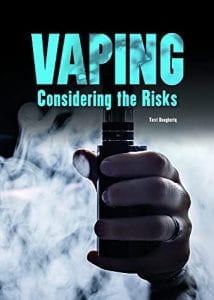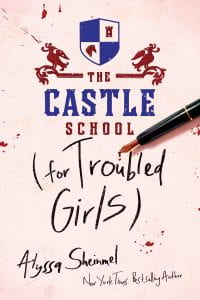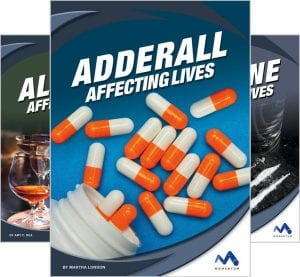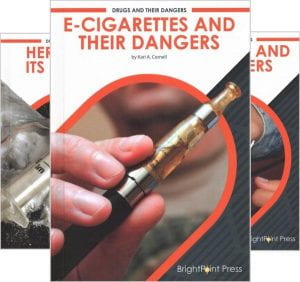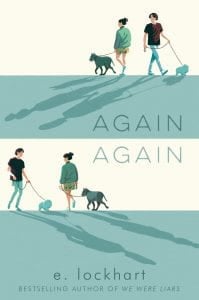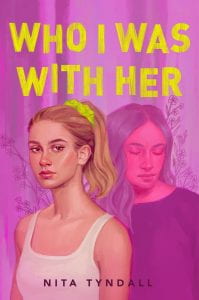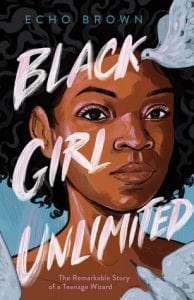 Dealing with Addiction. BrightPoint Press, 2023. 64 p. $33.05 ea. $$165.25 Set of 5. Grades 6-12.
Dealing with Addiction. BrightPoint Press, 2023. 64 p. $33.05 ea. $$165.25 Set of 5. Grades 6-12.
Kaiser, Emma. Smartphone Addiction. 978-1-678-20380-7.
Llanas, Sheila Griffin. Drug and Alcohol Addiction. 978-1-678-20374-0.
Miller, Marie-Therese. Social Media Addiction. 978-1-678-20378-8.
Roberts, Kizzi. Gaming Addiction. 978-1-678-20376-9.
Voss, Elizabeth Hobbs. Vaping Addiction. 978-1-678-20382-5.
This reviewer evaluated Gaming Addiction and Smartphone Addiction. Each title in this series begins with At a Glance which provides readers with a quick, bulleted overview of the topic addressed. Statistics like “Researchers think between 1 and 10 percent of gamers become addicted” (Roberts 4) easily could be incorporated into basic student research or utilized for a lesson on summarizing research. The introduction gives readers an anecdote regarding the topic. In Gaming Addiction, Ben loses interest in activities with his friends, instead opting to beat his high score. Ben’s friends confront changes they’ve noticed in him. In Smartphone Addiction Riley realizes she needs help after hardly hearing her friends while she checks social media notifications on her phone and earning a poor grade on an English essay. Four chapters include What is ___?, The science of ___, The effects of ___, and Treating the ___ (___ = addiction the title addresses). Frequent color photos, charts, text box highlights, and bold-faced vocabulary words make this series highly accessible to secondary researchers. Each book concludes with a glossary, source notes, for further research, and an index.
THOUGHTS: Marketed as hi-lo YA nonfiction, the titles in this series are best suited to middle and high school libraries and would be a great update to addiction collections or for use with health classes.
616.85 Mental Disorders
616.86 Substance Abuse

